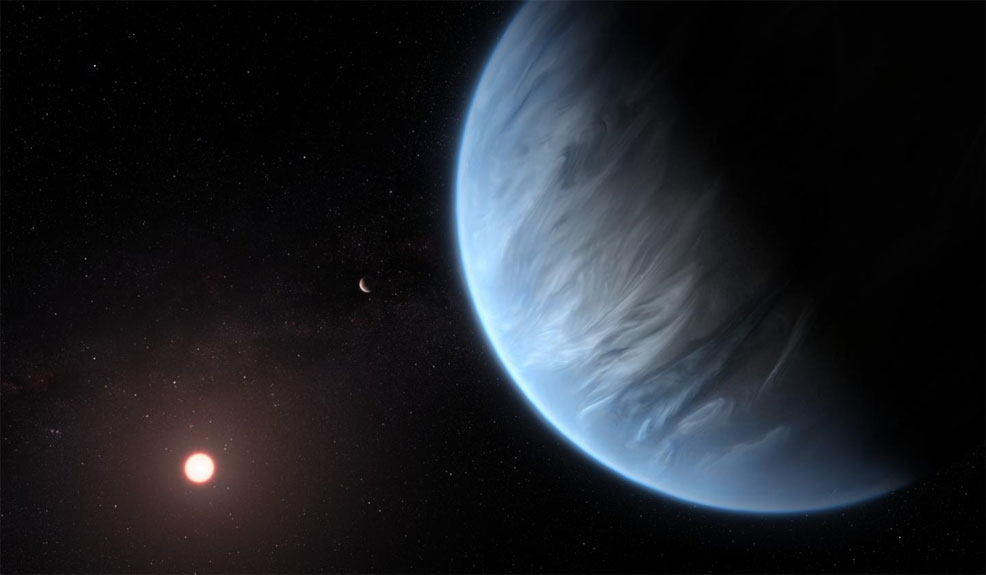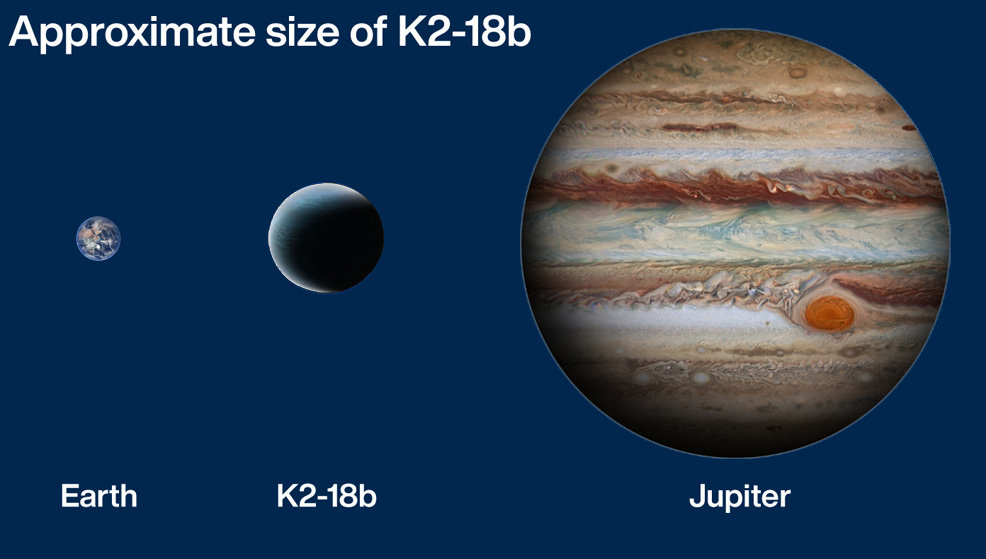
13th September 2019 First detection of water vapour in atmosphere of habitable zone exoplanet Astronomers report the detection of water vapour in the atmosphere of a habitable-zone exoplanet, K2-18b, which may be between 0 and 40°C.
Astronomers at University College London have used data from NASA's Hubble Space Telescope to find water vapour in the atmosphere of an exoplanet orbiting a red dwarf star, located 111 light-years away. If confirmed by further studies, K2-18b will be the only exoplanet known to have both water in its atmosphere and temperatures that could sustain liquid water on a rocky surface. Liquid water would only be possible if the planet turns out to be terrestrial in nature, rather than resembling a small version of Neptune. However, given the high level of activity of its parent star, K2-18b may be more hostile to life as we know it than Earth, since it is likely to be exposed to more high-energy radiation. The planet also has a mass eight times greater than Earth's. That means the surface gravity on this planet would be significantly higher than on our own. The astronomers used archive data from 2016 and 2017 captured by Hubble and developed open-source algorithms to analyse the host star's light filtered through K2-18b's atmosphere. The results revealed the molecular signature of water vapour, and also suggest the presence of hydrogen and helium. The study authors believe that other molecules, including nitrogen and methane, may be present but they remain undetectable with current observations. Additional work is required to estimate cloud coverage and the percentage of atmospheric water present.
"K2-18b cannot be classified as a mini-Neptune," said Prof Giovanna Tinetti of University College London, in an interview with BBC News. "It is more likely to be a planet with an interior of rock and ices. These types of planets, [are] sometimes called 'ocean planets'. Now, whether this planet really has an ocean at the surface or rock, we cannot tell with current observations, but having water in the atmosphere is a good start." K2-18b is one of hundreds of known "super-Earths" – exoplanets with masses between those of Earth and Neptune. NASA's TESS mission is expected to detect hundreds more in the coming years. The next generation of space telescopes – including the James Webb Space Telescope (2021) and ARIEL (2028) – will be able to characterise exoplanet atmospheres in more detail and look for smaller planets that are more similar in size to Earth. "Finding other planets that might have the capability to support life is one of the holy grails of astronomy research," said Dr. Colin Vincent, Head of Astronomy at the UK's Science and Technology Facilities Council (STFC). "This result based on data from Hubble gives an exciting taste of what may be possible in the next few years as a number of new telescopes and space missions supported by STFC and the UK Space Agency come online." "Our discovery makes K2-18b one of the most interesting targets for future study," added Prof Tinetti. A paper on her team's latest findings appears this week in the journal Nature Astronomy.
Comments »
If you enjoyed this article, please consider sharing it:
|








